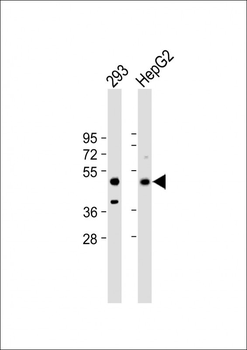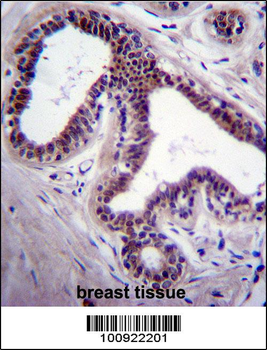You have no items in your shopping cart.
MAPK8 Antibody (C-term)
Catalog Number: orb1929201
| Catalog Number | orb1929201 |
|---|---|
| Category | Antibodies |
| Description | Purified Rabbit Polyclonal Antibody (Pab) |
| Species/Host | Rabbit |
| Clonality | Polyclonal |
| Clone Number | RB0922 |
| Tested applications | IF, IHC-P, WB |
| Predicted Reactivity | Rat |
| Reactivity | Human |
| Isotype | Rabbit IgG |
| Antibody Type | Primary Antibody |
| Dilution range | IF: 1:10~50, WB: 1:2000, IHC-P: 1:10~50 |
| Form/Appearance | Purified polyclonal antibody supplied in PBS with 0.09% (W/V) sodium azide. This antibody is purified through a protein A column, followed by peptide affinity purification. |
| Conjugation | Unconjugated |
| MW | 48296 Da |
| Target | This MAPK8 antibody is generated from rabbits immunized with a KLH conjugated synthetic peptide between 358-389 amino acids from the C-terminal region of human MAPK8. |
| UniProt ID | P45983 |
| NCBI | NP_620634.1, NP_620637.1, NP_001265476.1, NP_002741.1 |
| Storage | Maintain refrigerated at 2-8°C for up to 2 weeks. For long term storage store at -20°C in small aliquots to prevent freeze-thaw cycles |
| Alternative names | Mitogen-activated protein kinase 8, MAP kinase 8, Read more... |
| Note | For research use only |
| Expiration Date | 12 months from date of receipt. |

Confocal immunofluorescent analysis of MAPK8 Antibody (C-term) with HepG2 cell followed by Alexa Fluor 488-conjugated goat anti-rabbit lgG (green).DAPI was used to stain the cell nuclear (blue).

All lanes: Anti-MAPK8 Antibody (C-term) at 1:2000 dilution. Lane 1: 293 whole cell lysate. Lane 2: HepG2 whole cell lysate. Lysates/proteins at 20 µg per lane. Secondary Goat Anti-Rabbit IgG, (H+L), Peroxidase conjugated at 1/10000 dilution. Predicted band size: 48 kDa. Blocking/Dilution buffer: 5% NFDM/TBST.

MAPK8 Antibody (C-term) immunohistochemistry analysis in formalin fixed and paraffin embedded human breast tissue followed by peroxidase conjugation of the secondary antibody and DAB staining.This data demonstrates the use of MAPK8 Antibody (C-term) for immunohistochemistry. Clinical relevance has not been evaluated.


